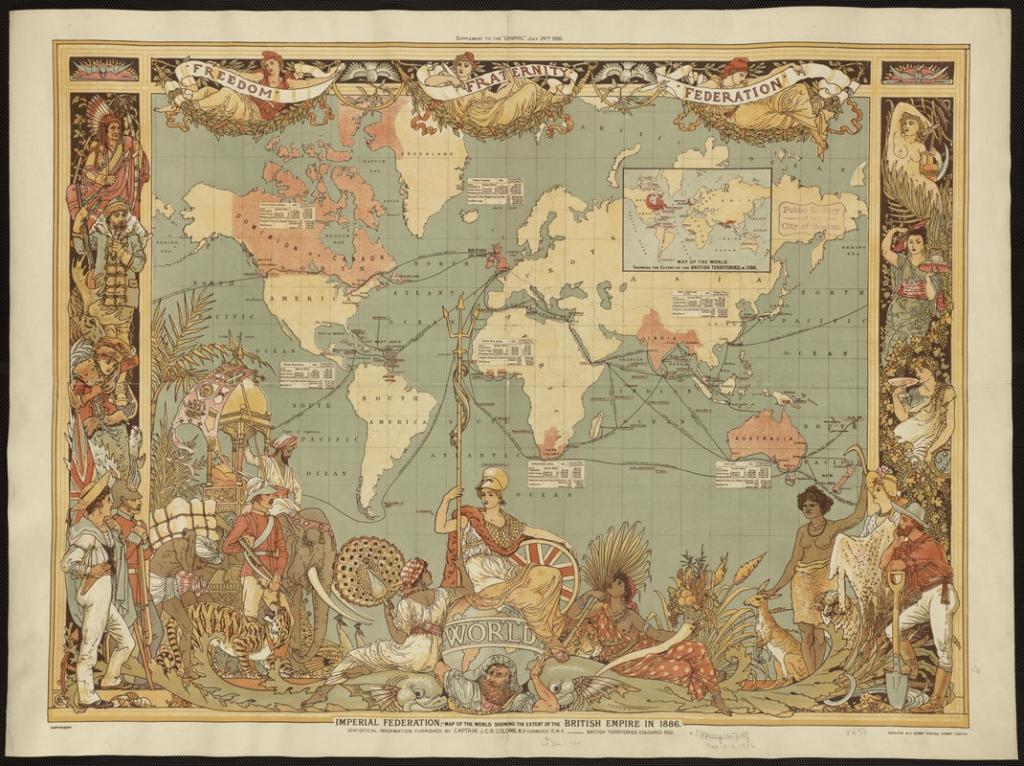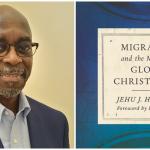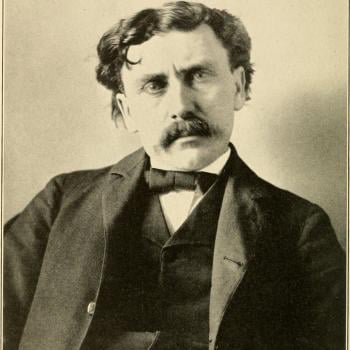Over the next few columns, I am going to be talking about a large topic, namely that of empire. Specifically, I will discuss the role of empires in making and reshaping world religions, including Christianity, Buddhism, and Islam. As you can guess, this all grows out of a book project I am currently thinking through.
Imperialism, colonialism, racism …. The linkages between the three seem all too obvious, and agonizing. But that does not mean that we should not know about such things. I have increasingly come to the realization that it is all but impossible to understand the history of most aspects of world history – from the ancient world through the Early Modern period through the Modern – without understanding empires, and without getting beyond the cliches and stereotypes that often dominate popular discourse about them. We really have to understand how empires worked, how they ruled, and how those realities affected religious patterns. And that goes far, far, beyond the simple cliché of empires imply bringing their own official religions to those colonial possessions through missions. Religions often grew and spread despite the best efforts of those empires.
Let me be clear about my point here. When I talk about the role of empires, I do not mean that religious events or developments chanced to happen at the time that a particular empire existed, or that it was rising or falling. I don’t just mean that (for instance) Jesus was born around the time that there went out a decree from Caesar Augustus that all the world should be taxed. Rather, I mean that the trends or movements that I am discussing happened in the way that they did because of particular characteristics of empires, because of their empire-ness. They were in a sense products or outcomes of the nature of empire.
My own particular stress on empires is partly a national-derived (originally British) perception, but it is also generational. Many Americans grow up with the touching illusion that empire was something that happened to other people. They would benefit from reading Daniel Immerwahr’s How to Hide an Empire: A History of the Greater United States, not to mention recalling that California and the south-west were originally acquired as part of an imperial conquest, and that those regions were not inevitably destined to be incorporated into the Lower 48 states.
Growing up in Britain and other European countries, you never had the option of pretending that empire had never existed, and well into the 1960s, old-style imperial history still made up a large portion of what we were actually studying in high schools. My history curriculum at that stage still retold the growth to glory of the British Empire in India and Africa, with all its heroes (Clive, Wolfe, Napier, Garnet Wolseley), and those deluded villains like the sultan Tipu of Mysore who resisted empire, and thus stood in the way of historical destiny. Not of course that this was the only kind of history on offer. My own high school assigned pupils into two distinct curricula, one being imperial and warlike, while others learned about British social history, with a central emphasis on labor unions, social democracy and reform movements. We studied the Indian Mutiny and the Opium Wars; they heard about the rise of the Labour Party.
Needless to say, no such choice exists any more. Even in the 1960s, with the British Empire in dissolution and a social and sexual revolution in progress at home, the imperial history track looked ludicrously reactionary and obsolete, and utterly out of keeping with current realities. That kind of history is now long gone, and British history pupils today are firmly set in the progressive mode. They study the rise of popular movements and women’s rights, and empire features – if at all – only in the context of anti-slavery movements. Old-style imperial history is in deep disfavor, and as most of us would say, thank Heaven for that. The biggest and most essential insight in the modern history of empires is the shift away from the top down view – that of social and racial elites – towards the perspective of the colonized, the oppressed, the subaltern.
But the imperial approach did leave a powerful legacy for me and for others of my generation, and that has proved invaluable in so much of what I have done through the years in terms of research and writing on the Global South, on Christianity, but also on Islam. Above all, we learned that an outside world did exist, even – God forbid – a world outside Europe. In contrast, the modern British curriculum is often criticized for the very narrow span of human existence that it seems to address, with an obsessive concentration on Germany and Russia between about 1930 and 1945. The wider world ceases to exist.
In contrast, an imperial-oriented education forced those benighted pupils to think globally. From my own recollection, we learned that India had a complex history of highly diverse peoples, of kingdoms with ancient traditions, and we learned something about the impact of trade and globalization in disrupting those long static worlds. We heard names like Sind and Punjab, about wars in Afghanistan and the North West Frontier. And we had to know something about geography. We learned about the interconnected worlds of the Indian Ocean, and why a British realm centered in India was so concerned about its coaling stations in the Arabian peninsula, in what is now Yemen. We had to know why and how the British regime in India expanded its trade into China. Amazingly, that Indian realm even encountered the Russians, also expanding into their own imperial space in Central Asia. Who knew that different worlds and cultures might interact, and in such strange places? Not, of course, that understanding the interplay of rival empires in Afghanistan is at all relevant to our current global concerns.
Speaking of relevance, everyone knows that in coming decades, the established economic powers will have to confront a range of rising nations. Since 2000, experts have been keenly interested in identifying rising and emerging economies that promise to match or overtake the familiar Euro-American leaders by 2050 or so. Alongside the traditional developed world are now a series of rising nations, grouped under catchy acronyms. The original list named the BRICs (Brazil, Russia, India, China) but other (overlapping) contenders include the MINTS (Malaysia, Indonesia, Nigeria, Turkey, South Africa), the KIMs (South Korea, Indonesia, Mexico), and the still more diffuse Next Eleven. The current roster of G20 nations includes the obvious rich nations of Europe, Japan, and North America, plus China, as well as Argentina, Brazil, India, Indonesia, Mexico, South Africa, Saudi Arabia, South Korea, and Turkey. In all, a dozen or so “inbetweener” names feature regularly as rising global contenders.
In none of those cases can those nations be understood without a strong grounding in the history of empire and empires. Some of those states were themselves empires. Others owe their national existence and identity to the intervention of foreign empires. In still others, their political orders are defined by the elites that emerged in in the struggle against empire.
Each of these powers is shaped by its historical memories. If the British have forgotten the Opium Wars, the Chinese emphatically have not.
If you want to see how an imperial-centered vision can rewrite our standard assumptions, look at Richard Overy’s recent mammoth study of World War II in his Blood And Ruins: The Great Imperial War 1931–1945 (2021). He is almost literally describing a different planet from the accounts we find in many other current books.
And then there is the religious factor. In 1651, Thomas Hobbes famously declared that in a much-quoted phrase, “the Papacy, is no other than the Ghost of the deceased Roman Empire, sitting crowned upon the grave thereof: For so did the Papacy start up on a Sudden out of the Ruins of that Heathen Power.” Actually, you can write a fine history of religious traditions and hierarchies in terms of their imperial origins, and by no means only the British. The Dutch, French, Portuguese, Spanish, Japanese, and Ottoman empires still maintain their ghostly existence out there as well. Whether we see it or not on a daily basis, the empires created the atmosphere in which we operate, and the ground on which we walk. And very much, for better or for worse.
To varying degrees, all the world’s major religions exist in what we might call a post-imperial environment, and in some of the largest and most significant nations, the patterns are still powerfully post-colonial. A global history of Christianity, or of Buddhism, or of Islam, or any other world faith, is of necessity an imperial history.
As I will show over the coming weeks, empire is a critical missing dimension in the history of global religion.
Next time, I’ll address a fundamental and surprisingly difficult question: what is an empire, anyway?














